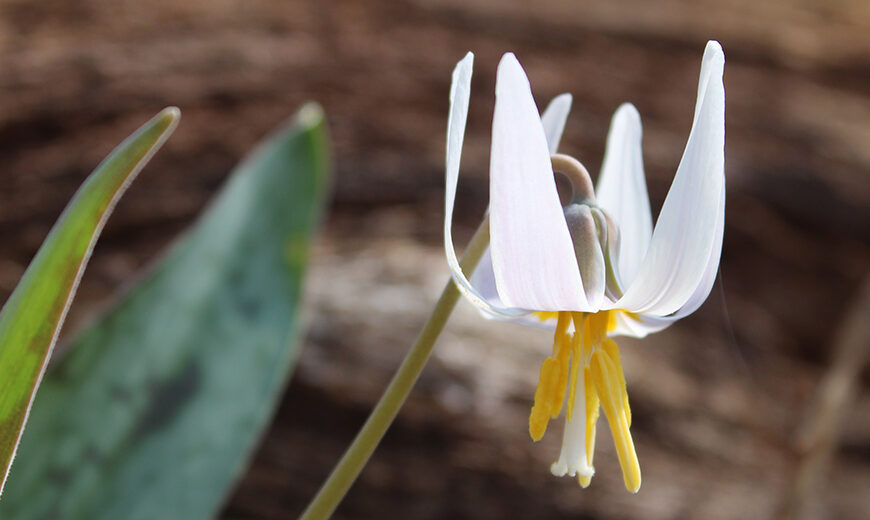Community Members Encouraged to Help Naturalists Track Spring Ephemerals
Spring shows itself in ways both big and small. One of the smallest—and earliest—signs of the season is ephemeral wildflowers that poke their heads out from beneath the brown leaves that carpet the forest floor.
“Spring ephemerals refer primarily to woodland wildflowers that bloom before the trees leaf out,” said Pam Otto, an outreach ambassador and naturalist at the St. Charles Park District. “They use the sunlight available to them to grow, bloom and produce their seeds all within a matter of a few short weeks—hence the name ephemeral.”
Established in 2021, the Kane County Spring Ephemerals iNaturalist project has helped community members locate and record the presence of these enchanting wildflowers in natural spaces throughout the area. Data collected by community scientists using the iNaturalist app, a crowdsourced species identification app, allows restoration ecologists to better observe trends and monitor fluctuations in native species.
“With all the ecological restoration that has been done, Delnor Woods Park is a great place to start looking at and learning about spring ephemerals,” Otto said.
Norris Woods Nature Preserve also boasts considerable floral diversity, Otto added.
With their eyes trained to the ground, nature-lovers can start seeking out blooms in late March and early April. This time of year brings the arrival of species like bloodroot, which sports white petals and a reddish-orange root; hepatica, which typically comes in shades of blue and lavender; and the less commonly-spotted twinleaf, whose white-petaled flowers are accompanied by leaves that appear to have been pinched into two separate parts.
Following these early bloomers is the delicate white and pink spring beauty; trout lily with its elegantly curved petals; blue-violet Jacob’s ladder; and the distinctive maroon prairie trillium. Also spotted at this time are the white flowers and large umbrella-like leaves of the mayapple, the unusual hooded flowers of Jack-in-the-pulpit and the vibrantly pink wild geranium.
“Two other early spring wildflowers, skunk cabbage and marsh marigold, prefer the wet growing conditions found in a fen–a type of wetland fed by groundwater,” Otto said. “Skunk cabbage actually gets the title of earliest flower, sometimes blooming in mid-February.”
Otto recommends Ferson Creek Fen for skunk cabbage and marsh marigold sightings.
“Follow the trail and boardwalks that lead to the south and west to look for these flowers that like to keep their feet wet,” she said.
By using iNaturalist, community members can help those whose mission it is to preserve and expand native species diversity in the region. This is the fourth year data about local flora has been collected through the app.
“It’s this reporting over time that allows our restoration ecologists to see developing trends,” Otto said. “Increases in native species diversity, for example, is a good trend. But if native numbers were to drop and invasive species numbers started to rise, that would signal a trend that needs to be reversed.”
The ever-growing data also enables naturalists to see if the timetable for spring ephemerals is changing as is the case when milder winters cause flowers to bloom earlier in the season.
iNaturalist is available in app stores. Once downloaded, people can search Kane County, IL: Spring 2024 Ephemerals.

